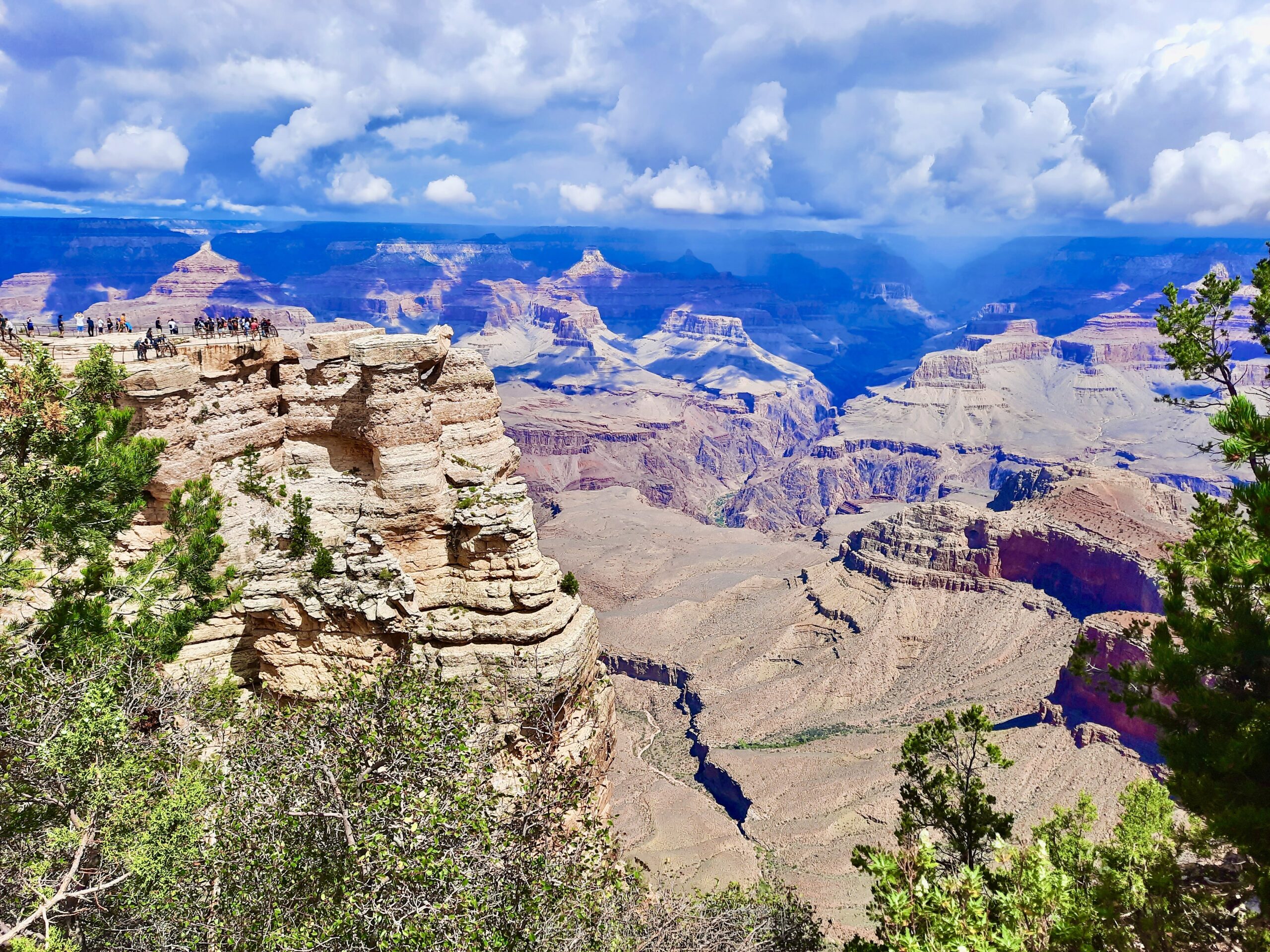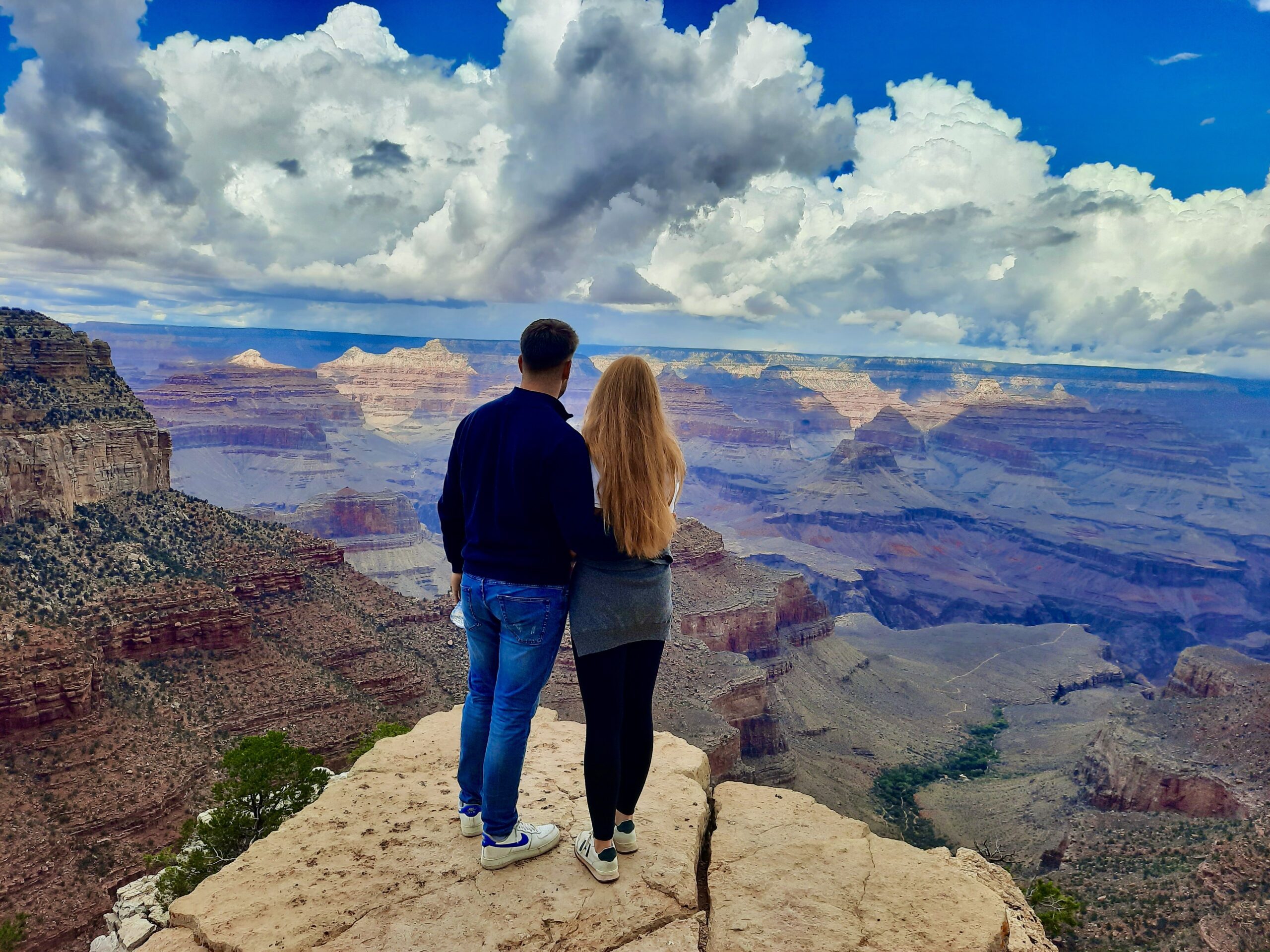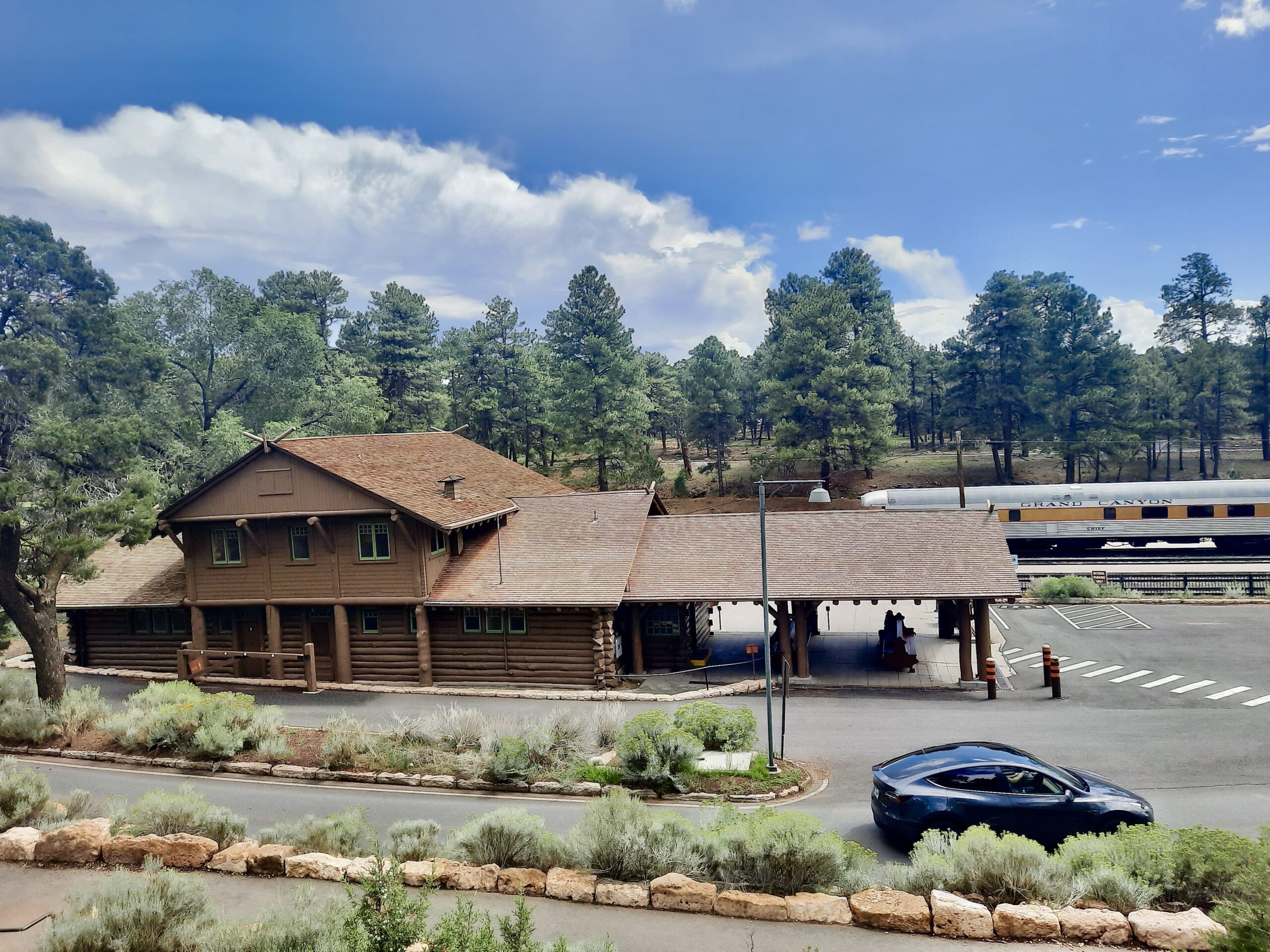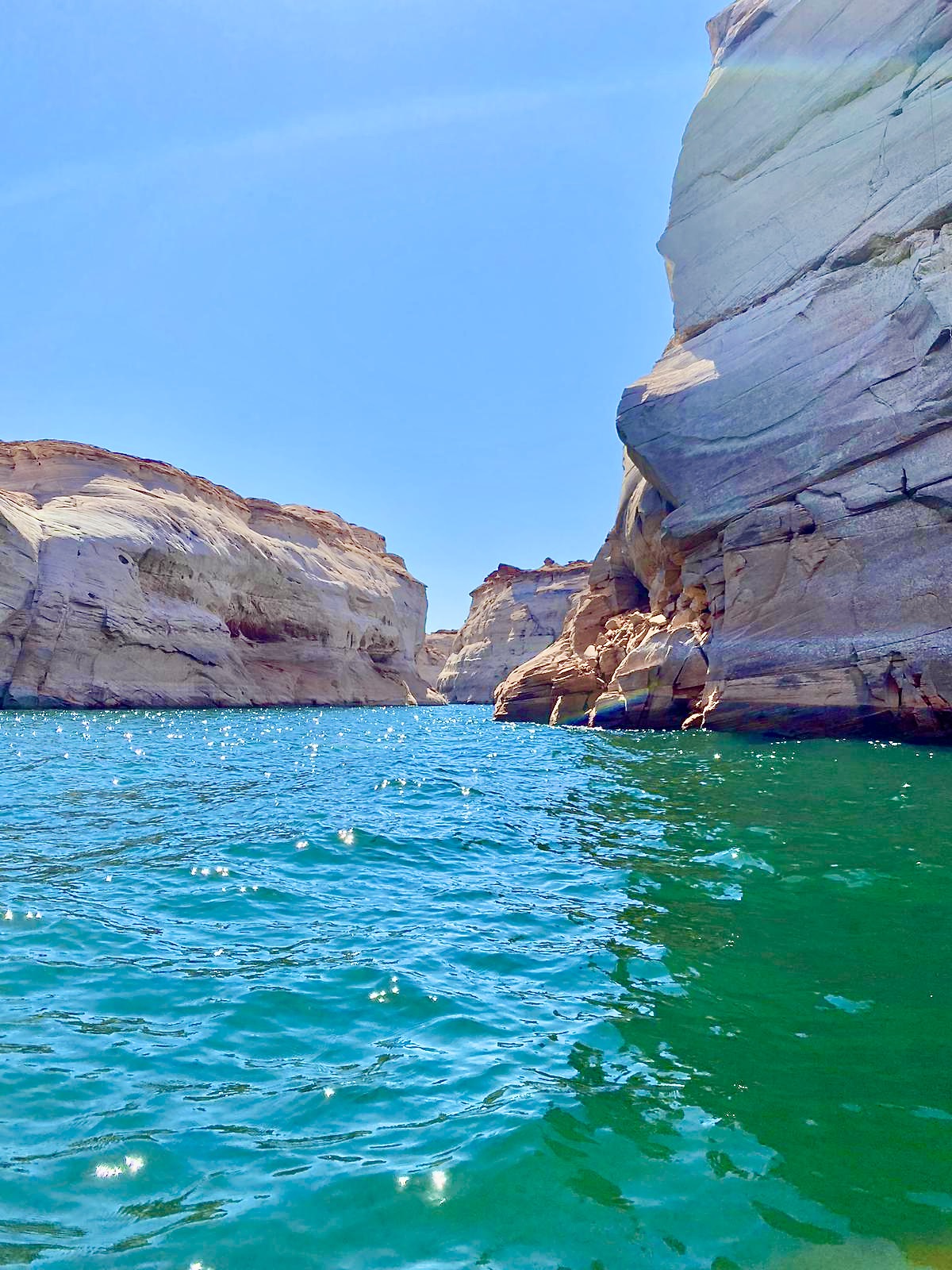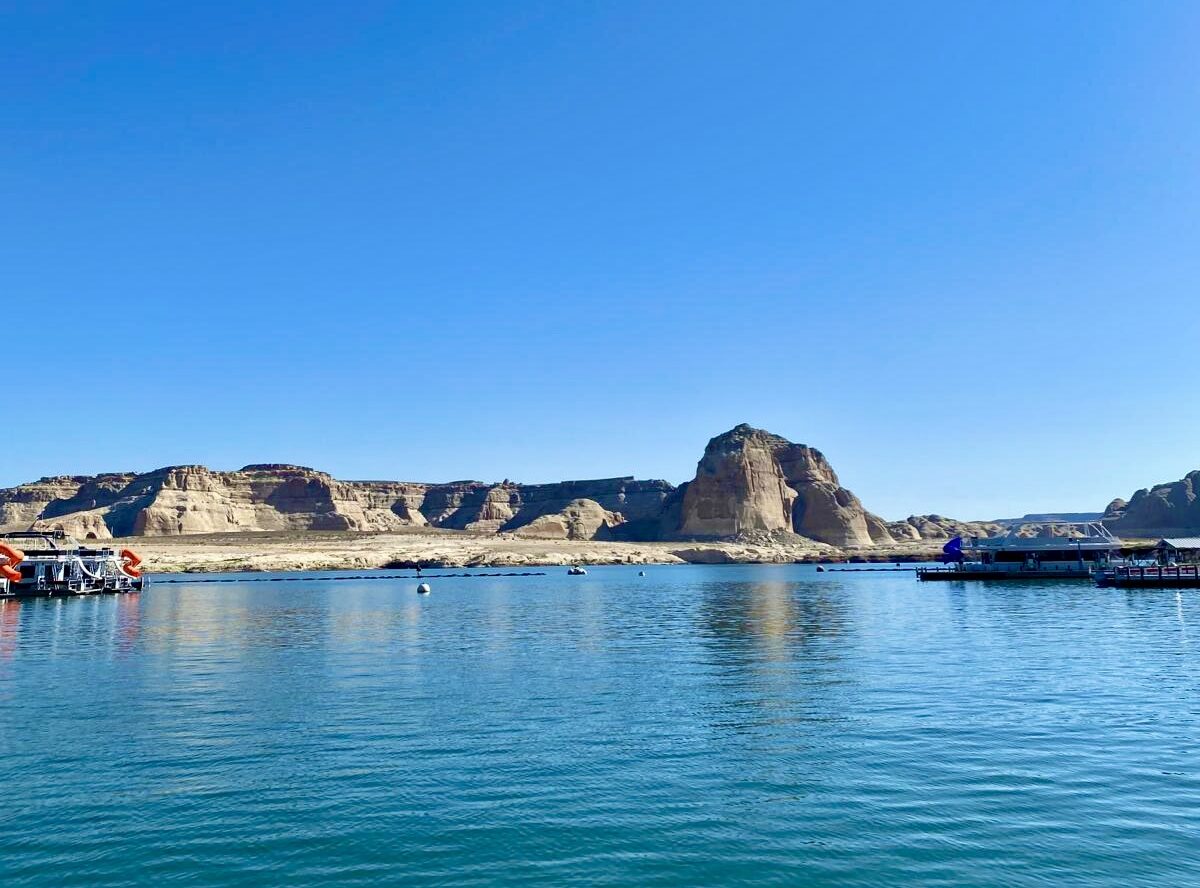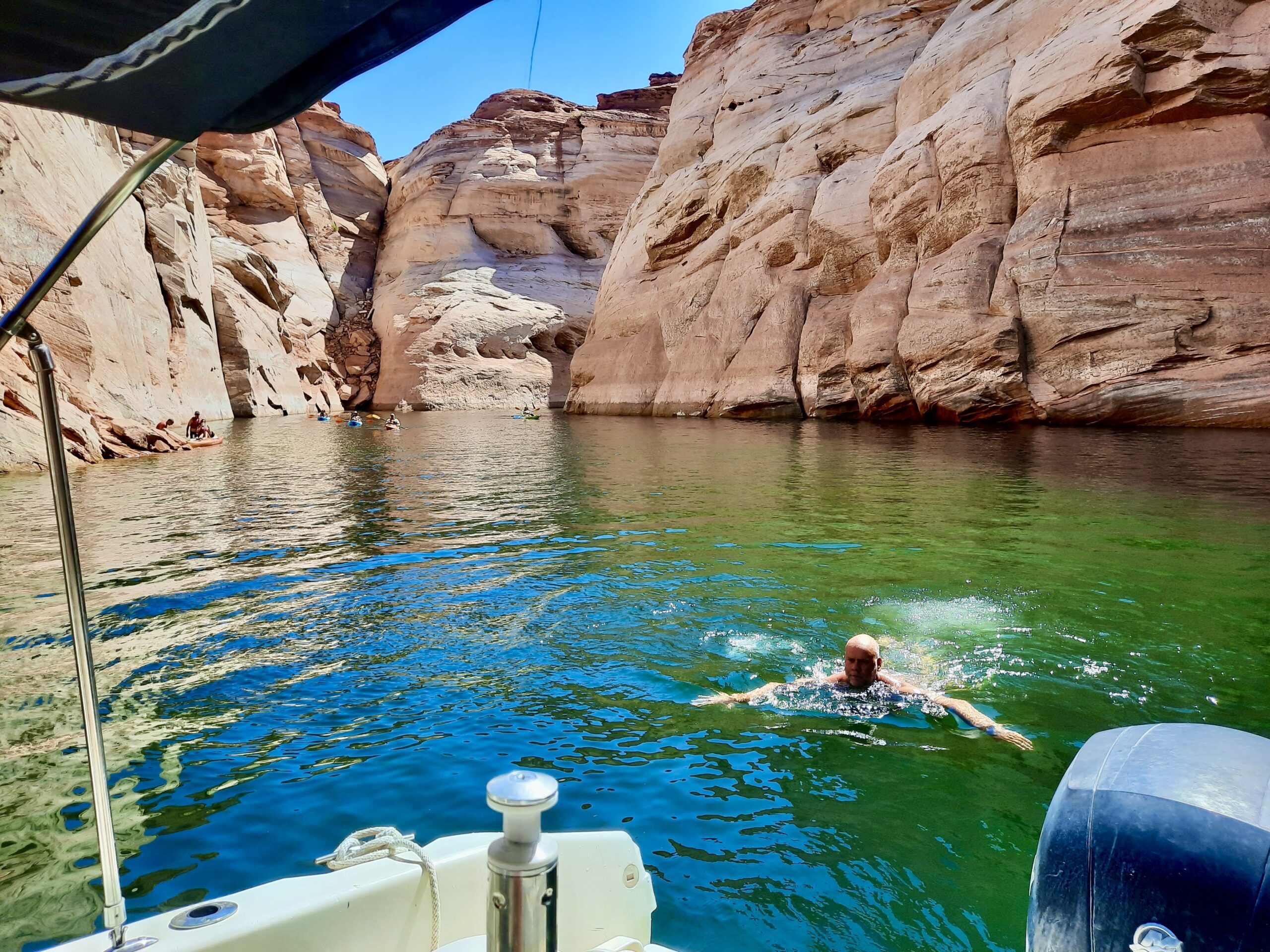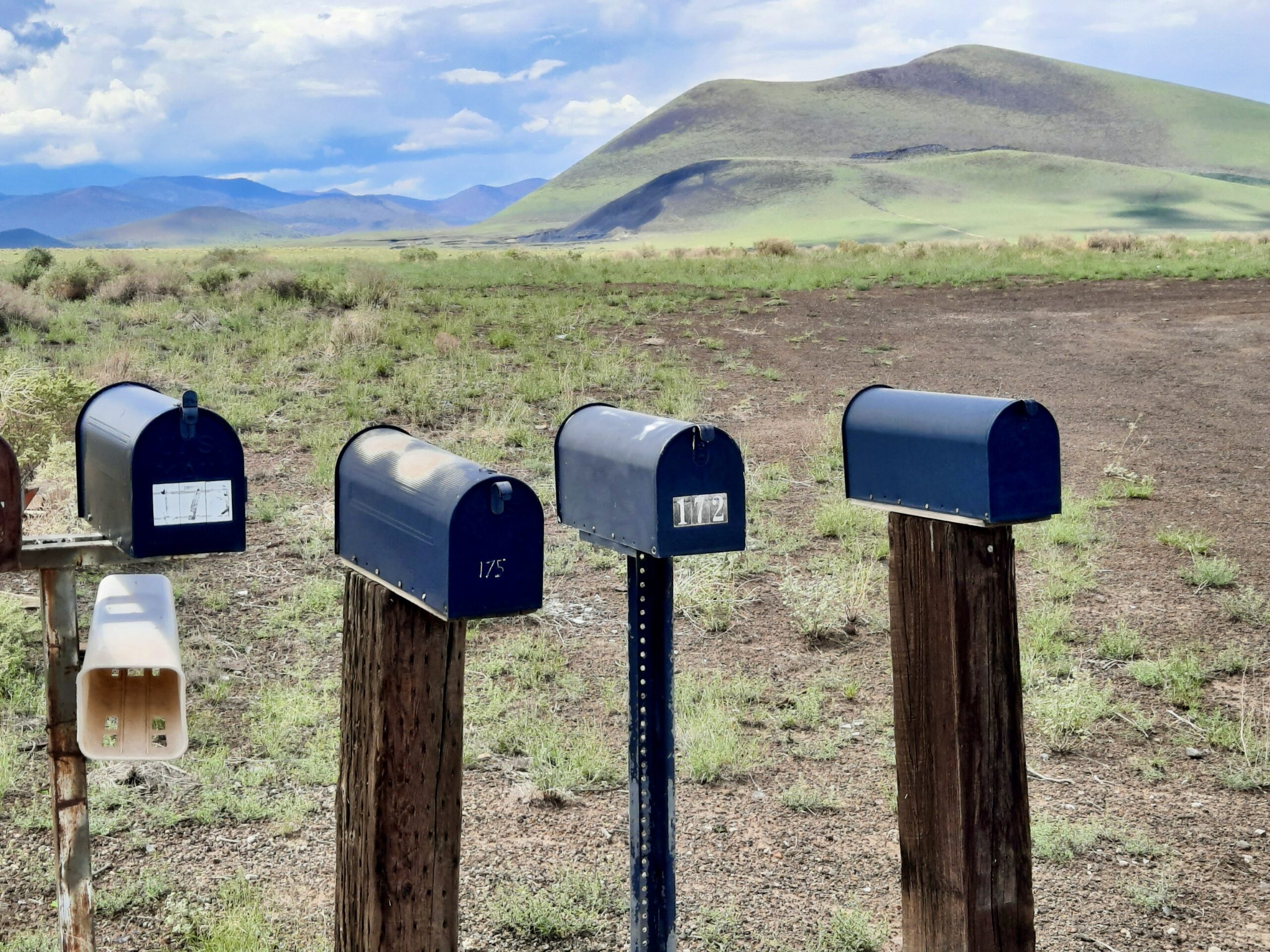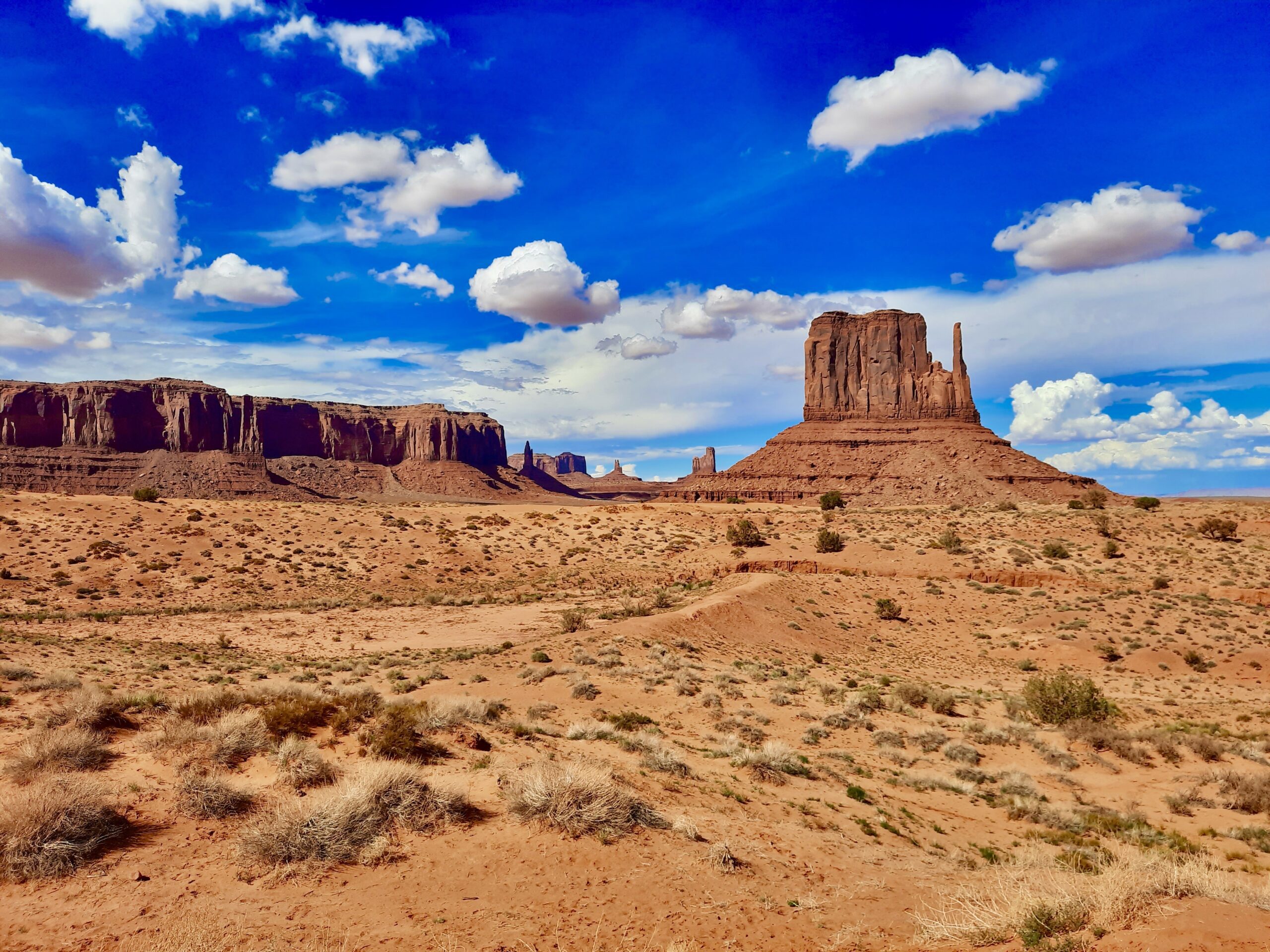
Cruise on the river Rhône through Provence
14. March 2024
Luxury hotels in the Alps – an interview with Carsten K. Rath
17. April 2024Large landscape cinema in the Grand Canyon & Co.
There is hardly a gorge more famous in the world than the Grand Canyon in northern Arizona. You've seen it countless times in films and photos, but anyone who actually stands at the first viewing point on the edge of the gorge is speechless at its vastness, depth and dramatic beauty.
From the Grand Canyon, I'll take you on an adventurous road trip through the Grand Canyon State to lesser-known but spectacular canyons, including a few real insider tips and a wild waterfall. It goes first northeast and then further south through the Navajo Nation reservation, the largest Indian reservation in the USA, on the border with New Mexico. Continue south via Flagstaff and Sedona to Scottsdale.
My tip for a 10-14 day trip: Fly to Las Vegas, party there, then set off in a rental car for a week of canyon hopping with swimming fun in the Mojave Desert, and at the end in Scottsdale in one of the great wellness centers. Relax in hotels in the Sonara Desert and fly home from Phoenix. Yeah, that's how vacation works!
- Divine panoramic views: the Grand Canyon on the South Rim
Grand Canyon National Park
The mighty Colorado rock plateau, through which the raging Colorado River has made its way for around 450 kilometers - stretches from southern Utah to northwestern Arizona - the Grand Canyon. It was created an incredibly long time ago, namely around two billion years. Geologists determined this from the steep walls of the gorge, which are built like a layered salad and sometimes consist of harder, sometimes softer rock. At the bottom of the approximately two kilometer deep Grand Canyon, the Colorado River meanders tipsily in wonderful loops on its way to California towards the sea. Depending on the time of day, the rocks in the gorge glow from gray-green to ocher and orange-red. At sunrise or in the evening sun the view is simply magical, for example at Yaki or Hopi Point.
Every year the Grand Canyon has around six million visitors. Most people go to the South Rim, which can be visited all year round. The North Rim is closed due to snowfall from approximately October to May. But in summer it is the more idyllic alternative to the very well-visited other side of the valley. Another spectacular viewpoint in the form of a glass, horseshoe-shaped skywalk lies outside the national park on the Hualapai Reservation in Grand Canyon West.
- Clouds sweep over the Grand Canyon and leave the rock towers sometimes in the shade, sometimes in the sun
- You can also travel by train to the small village on the South Rim of the Grand Canyon. The Hotel El Tovar is located above the railway station
- Lots of wood, stuffed elk and bison on the walls and good US cuisine: the Hotel El Tovar was built in 1905 on the South Rim of the Grand Canyon
The classic visit is the paved South Rim Trail. It is lined with museums and visitor centers where you can find out more about the natural wonder, which is a UNESCO World Heritage Site. There is also one fantastic viewing point after the other. Here the view wanders over the stepped rock walls and bizarre stone formations into the depths and to the horizon. In the Hopi House, built in 1905, you can browse for beautiful Native American handicrafts or souvenirs, and opposite is a dream hotel on the edge of the canyon. El Tovar was also built in 1905 and offers cozy western-style chic. In the lobby, stuffed bison, elk and deer heads look out at visitors and you can meet the animals live in front of the door between the mighty ponderosa pines. El Tovar's restaurant and bar serve fine, classic US cuisine. There are a few more lodges to stay at the canyon rim, but most visitors look for a hotel room in the Grand Canyon Village, for example the Best Western Premier Grand Canyon Squire Inn (family hotel with pool, large rooms).
Other excursions: There are several scenic drives that you can do with your own car or with shuttle buses and of course hikes like the South Kaibab Trail. Hiking tip: prepare well, take plenty of water with you, it's hot as hell in summer; Wear high hiking boots, there are dangerous rattlesnakes and only set off when the weather is good. In summer, sometimes strong thunderstorms pass over the Grand Canyon. You're likely to see moose and deer among the ponderosa pines. My tip: Walk past calmly, keeping your distance.
Panoramic helicopter flights over the Grand Canyon inspire many people and they are certainly great. They were too expensive for me and I thought I didn't have to worsen my eco-balance after the long-haul flight.
- Start at the Wahweap Marina: hire a motorboat here and sail across Lake Powell
Lake Powell - in a motorboat through a super canyon
A three-hour drive northeast from the Grand Canyon takes you to Wahweap Marina at the southern tip of Lake Powell on the Utah border, six kilometres from Page. The second largest artificial lake in the USA was created after the construction of the dam at Glen Canyon in 1966 and it took dozens of years for the canyon to fill with water. Today it is a popular holiday destination, especially for American families who cruise the lake for days on end in their super-comfortable houseboats (two-storey, slide, jet skis at the stern, etc.), moor the boat overnight in bays and dine under the fantastic starry sky. The scenery at Lake Powell in the Mojave Desert is almost unearthly: the gigantic, glittering blue lake (coastline length approx. 3100 kilometres) stretches like a giant octopus with many long arms through the shimmering golden sandy backdrop, with steep, red-yellow rock faces, bays, islands, beaches, rock bridges and breathtakingly narrow side canyons. My tip: Hire a motorboat at the Wahweap Marina (car licence and passport are sufficient, book in advance), pack a picnic and spend a day cruising the lake, marvelling at the mighty dam at close quarters and swimming in the narrow canyons (water temperature in summer approx. 26 degrees) - fantastically beautiful!
You can stay overnight at the Lake Powell Resort with a fantastic view of the lake and the marina (rooms with balconies are a bit dated, nice pools, restaurant) or in a hotel in nearby Page. Restaurant tip in Page: Big John's serves Texas-style BBQ and delicious margeritas.
- Swimming fun in a narrow canyon: if you cross Lake Powell by motorboat, you can find the perfect spot for a refreshing swim
Now it's off to the Navajo Nation Reservation.
The reservation is about the size of the German state of Bavaria and has its own government and police force. It is sparsely populated, the unemployment rate is high and many people live below the poverty line. The Navajo Nation follows daylight saving time from around mid-March to early November. Therefore, you have to set your watch forward by one hour during these months. And one more note: alcohol is prohibited on the reservation. If you want to drink a beer or glass of wine at sunset during your stay here, you must buy the alcohol before entering the reserve. My tip: buy a cool box, ice cubes are available in every motel along the route.
- A common sight on the road through the Navajo Nation Reservation: letterboxes are lined up in rows in a magnificent landscape, with no houses to be seen
Horseshoe Bend and Antelope Canyon
These two natural beauties in the Mojave Desert are located on the Navajo Nation reservation near the town of Page. A few kilometres downstream from the Lake Powell dam, the Colorado River makes an impressive horseshoe loop. Walk there from the car park and admire the breathtaking view into the depths of the Horseshoe Bend.
Nearby is Antelope Canyon, which is divided into Upper, Lower and X-Canyon. All three must be a fantastic experience. The tours through the individual canyons cost from around 50 dollars per canyon, the less popular is the X-Canyon and the tours are well booked in summer. It is essential to book in advance. I didn't do this and everything was fully booked.
- Horseshoe Bend in front of dark thunderstorm scenery: Near Page, the Colorado River makes an impressive loop
Monument Valley
The high plateau on the Colorado Plateau with its gigantic mesas and rock towers may not be a canyon, but you have to see this beautiful landscape, which belongs to the Navajos. Countless films have been shot here, including many legendary westerns with John Wayne. You can find out how Monument Valley was discovered for film and thus also for tourism by staying overnight at Goulding's Lodge just outside the park. Mr and Mrs Goulding founded a trading post here in 1928 and traded with the Navajos. When business was no longer going well during the Great Depression, they impressed director John Ford in Hollywood with Monument Valley, who then shot his next film (Ringo, 1939) here. Goulding's Lodge has set up a museum about the early days and film history in the original building and the Gouldings' old home can be visited on the upper floor. In the theatre, the lodge shows films shot in Monument Valley, and there is a restaurant, supermarket and petrol station. You can either stay in the main house or in cosy chalets with a terrace.
- A favourite spot for a souvenir photo is Man-On-Horse Point with the rock formations called Butte in the background
- Legendary film cowboy: I meet John Wayne at Goulding’s Lodge in Monument Valley
- Right at the park entrance are the world-famous rocks The Mittens and Merrick Butte, here the West Mitten. Tip: Watch the sunrise here
- In Monument Valley, the Navajos share their culture with guests. This Indian woman uses a doll to show how babies were transported
If you want to stay closer to the park, book a simple wooden cabin in The View and enjoy a wow view of the blood-red sunrise between the rock towers.
You can drive around the park in your own car on the 17-mile loop or book a guided bus tour that takes you further into Monument Valley.
But the best experience for me was a horseback ride through Monument Valley with a guide from the Navajo tribe (e.g. Dineh Trail Rides). The ride starts at the famous Man-On-Horse Point on narrow sandy paths and past rock overhangs, mesas, the Moneytree and impressive rock needles. It is unforgettably beautiful! Navajo families live in the park in traditional hogans (round buildings made of clay and wood). They sell handicrafts and give an insight into their lives. You can also spend the night in a hogan,e.g. here in Monument Valley or near Page at Sash Dine Glamping.
- Wild West flair in Monument Valley: ride on horseback with a Navajo over red sand tracks and past mesas
- The guide from the Navajo tribe takes a short break at Moneytree in Monument Valley. I feel like I’m in a film on this unforgettably beautiful ride
- Table mountains, rock needles and stone towers in Monument Valley – a landscape like no other
Canyon De Chelley in Chinle - an insider tip
The Canyon De Chelley is a real insider tip and has a dramatically beautiful scenery with the 244 metre high sandstone pillar The Spider Rock. A top spot on the edge of the canyon at sunset! As with the Grand Canyon, you can also take a scenic drive, but my tip is to stay overnight in the only hotel directly in the canyon park. The Thunderbird Lodge is owned by Navajos, has a restaurant, a boutique with beautiful handicrafts and 69 cosy, ground-floor rooms that are lined up like a motel. You park in front of the door. You have to book the shake-and-bake tour here. The name lives up to its promise. The Navajo guide takes you in an off-road vehicle with an open flatbed through the middle of the canyon, which can turn into a raging river after a lot of rain. Don't worry: the powerful four-wheel drive vehicle masters the challenge. But it is an adventure. You drive past the high rock faces, see Indian petroglyphs, horses and also houses belonging to the 40 or so Navajo families who live in the canyon today. The guide tells you about the way of life of the Native Americans, the early Pueblo culture and how in 1863/64 the last Indians sought refuge here from Kit Carson and his men and threw themselves to their deaths from the 300 metre high cliffs. A painful story set against a magnificent natural backdrop.
- The Canyon De Chelley near Chinle close to the border with New Mexico is impressive. The 244 metre high sandstone pillar Spider Rock stands in the middle of it
- An adventure: On the flatbed of a Pinzgauer troop carrier built by Steyr-Puch in Austria, the shake-and-bake tour takes you through the Canyon de Chelley
- One lasso throw please! No problem for cowboys in Arizona
On the way to Holbrook
Visit the Hubbel Trading Post National Historic Site. It is one of the oldest trading posts and still looks like it did in the 19th century when John Lorenzo Hubbel started trading with the Navajos in 1876. You can still buy beautiful things in the shop.
- Hubbel Trading Post National Historic Site: One of the oldest trading posts that still looks like it did in 1876 when John Lorenzo Hubbel began trading with the Navajos
Shortly before Holbrook, you turn off onto a 10-mile sandy track in the Painted Desert, which should only be driven on if it is not too muddy. Otherwise only with a four-wheel drive car. At the end of the track, a mighty thunder and roar announces the Grand or Chocolate Falls. The waterfall of the Little Colorado River plunges impressively into the depths and carries a lot of water and brown mud with it after a lot of rain or melting snow - hence the name. The Chocolate Falls are rarely visited and there is neither a toilet nor a kiosk.
If you need an overnight stay in Holbrook: The 59 rooms at the GreenTree Inn are relatively modern, new and clean. Holbrook is a desolate place, with only a few restaurants. At The Chamaleon you can eat Mexican home cooking such as enchiladas with beans and rice.
After Holbrook, you leave the Navajo Nation reservation.
- Hardly visited, but impressive: the Grand or Chocolate Falls
Last canyon: Walnut Canyon
A picturesque, small but deep canyon where people lived for 800 years. My tip: Take the one-hour walk down the stairway into the canyon and discover the old Pueblo rooms of an early Native American tribe called Sinagua under the rocky outcrops.
If you want to find out more, visit the well-designed Museum of Nothern Arizona nearby.
The more adventurous can drive to Flagstaff on Route 66, which is popular for skiing in winter, and to the attractive town of Sedona with its striking red rocks.
Otherwise, drive about three hours to Scottsdale and check into one of the beautiful wellness hotels in the Sonoran Desert for a few days. See blog article Scottsdale.
More info: www.visitarizona.com
- For 800 years, the Sinagua Indians lived under the rocky outcrops in Walnut Canyon near Flagstaff
Photocredit: Petra Kirsch
The trip was supported in part by the Arizona Office of Tourism.


